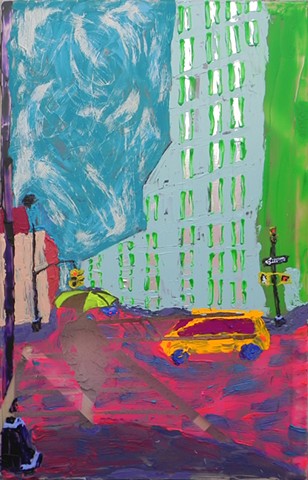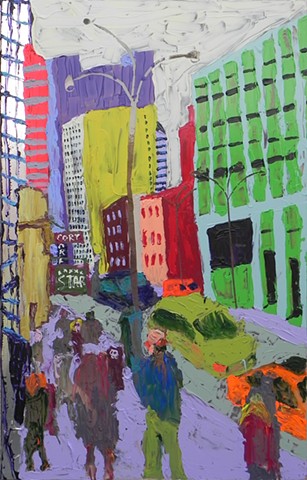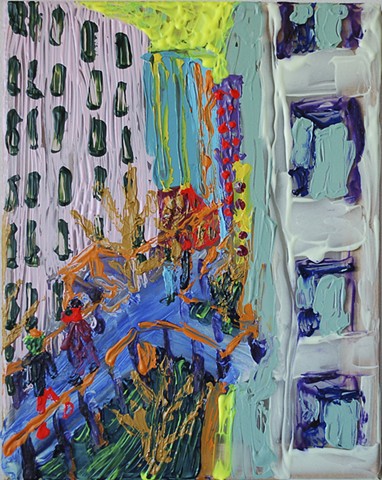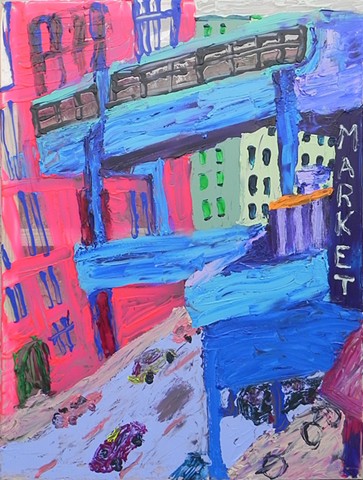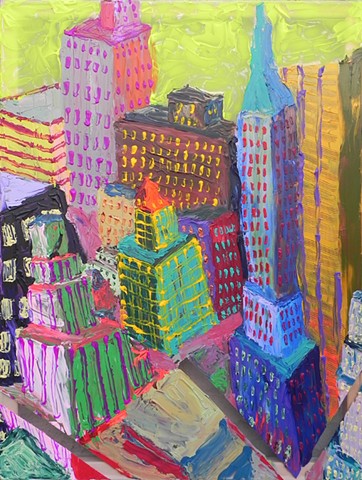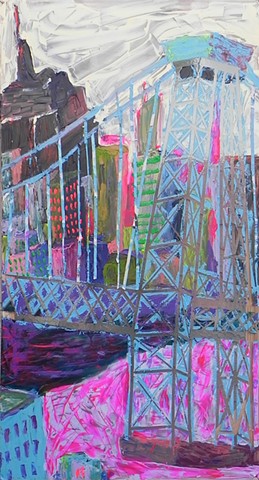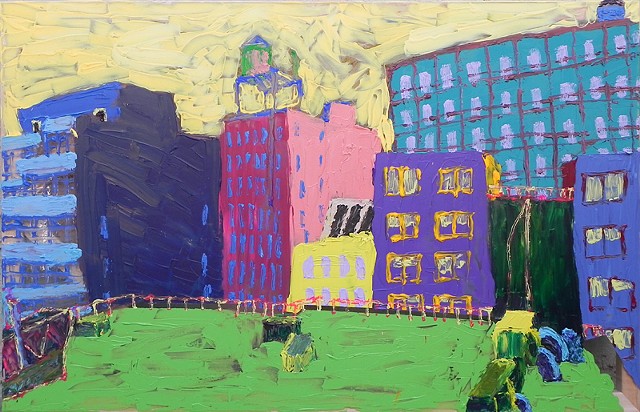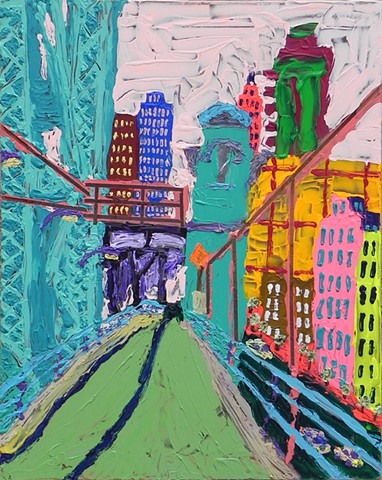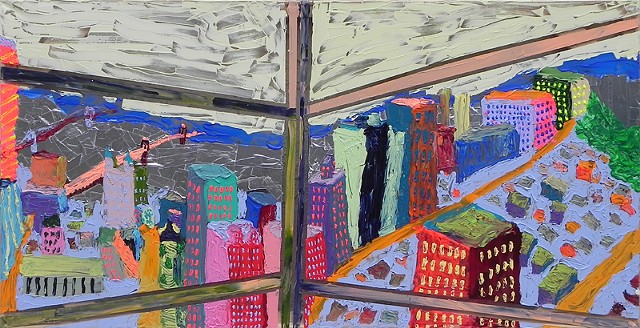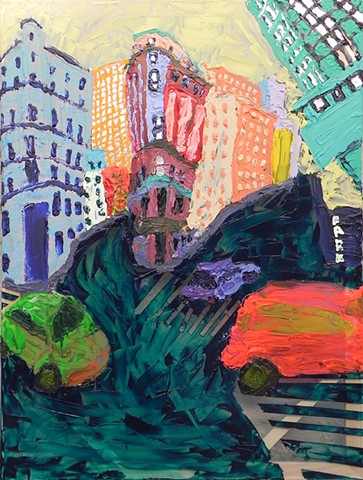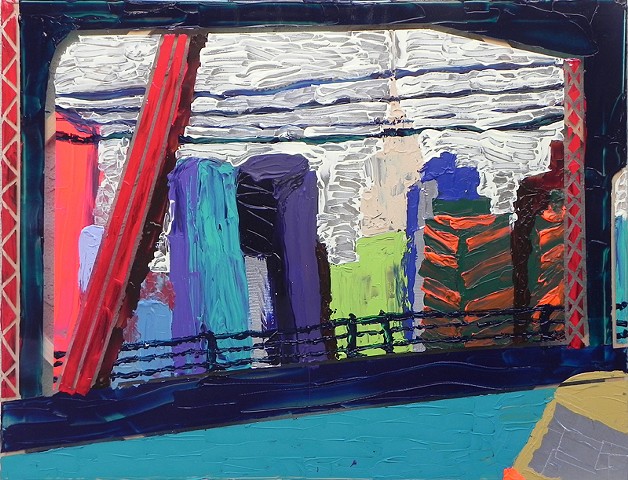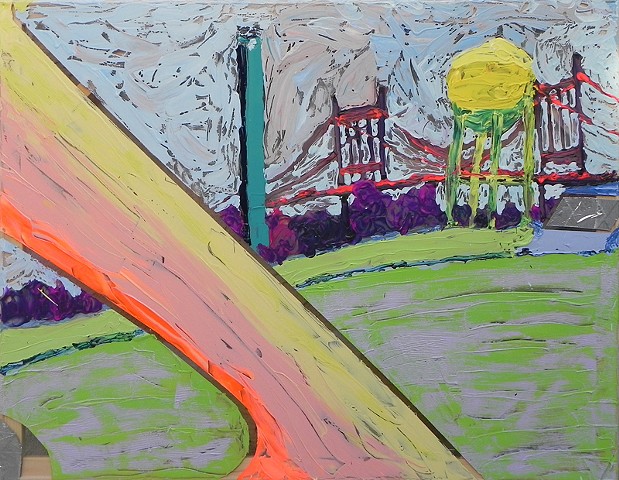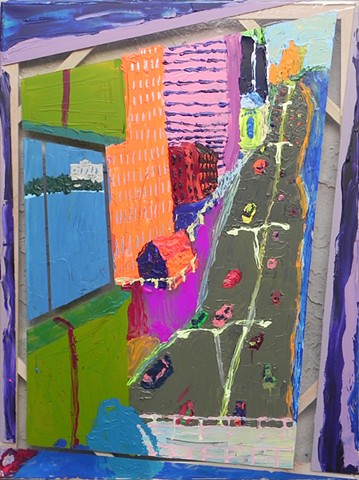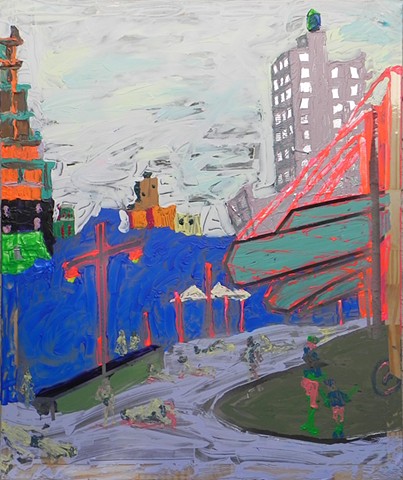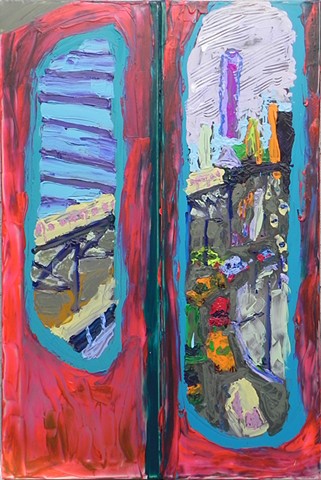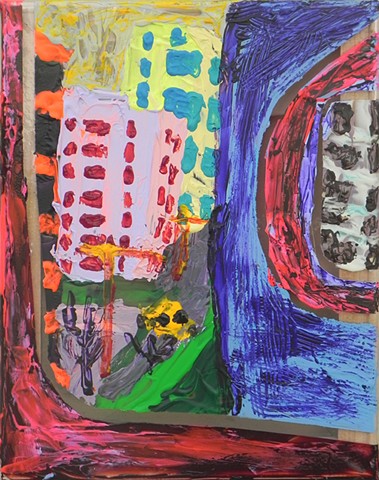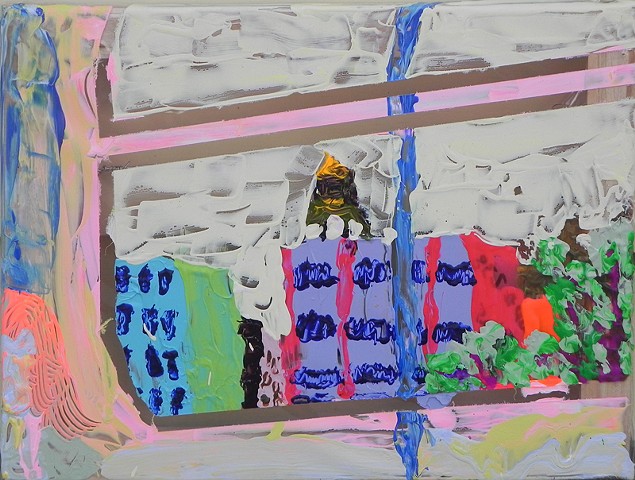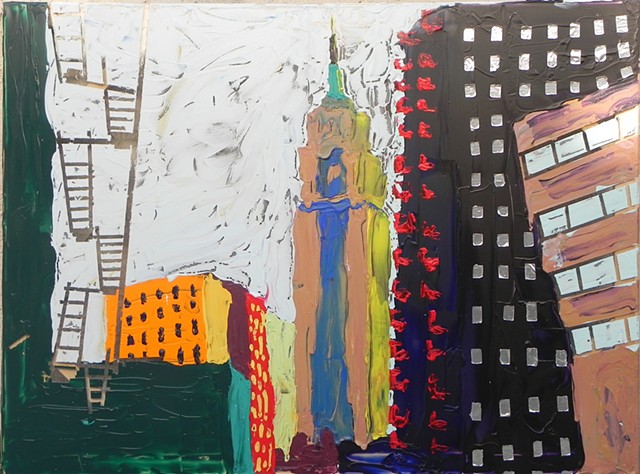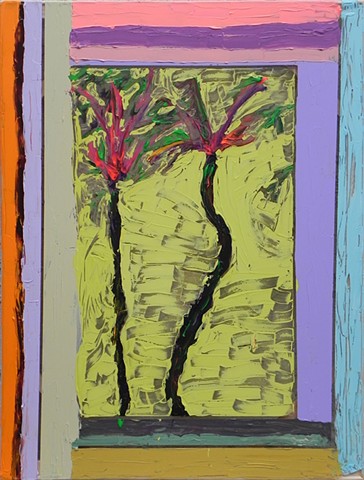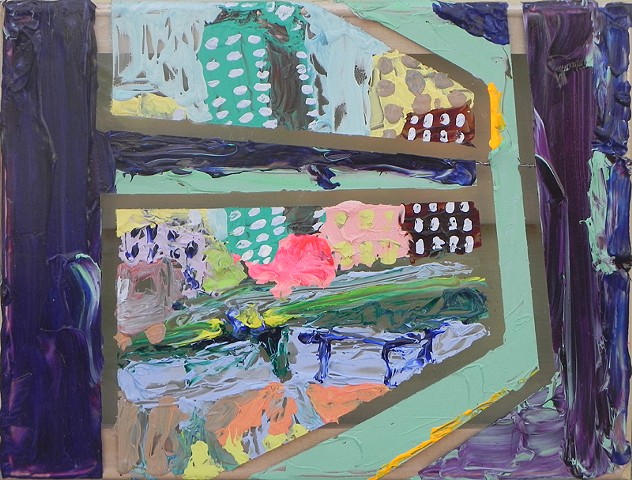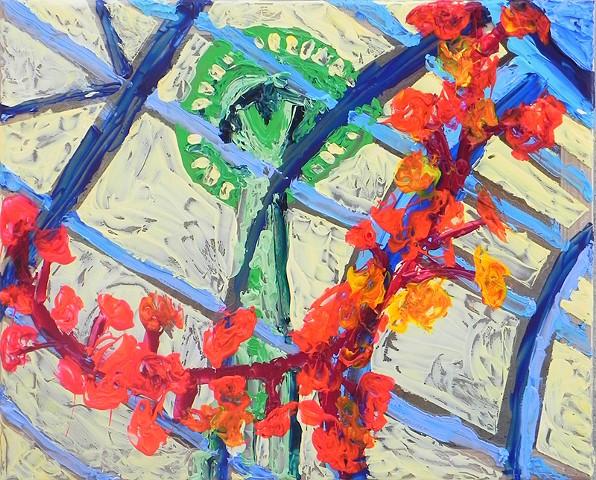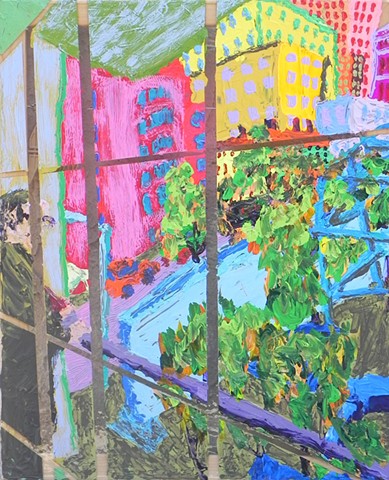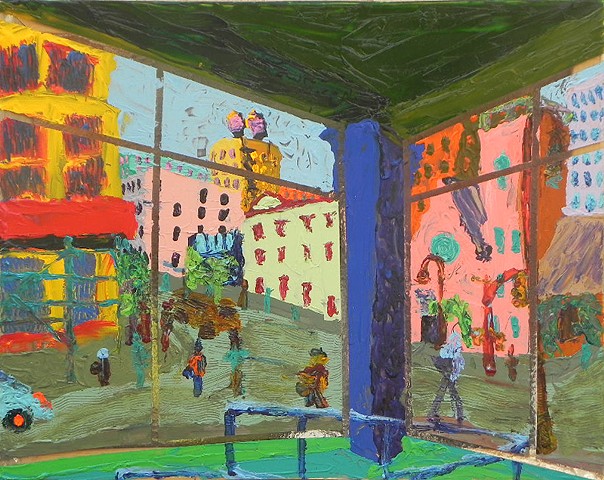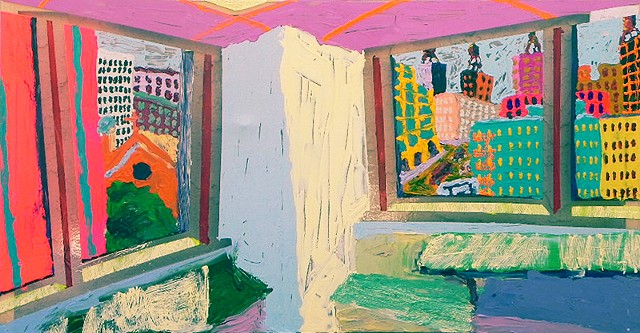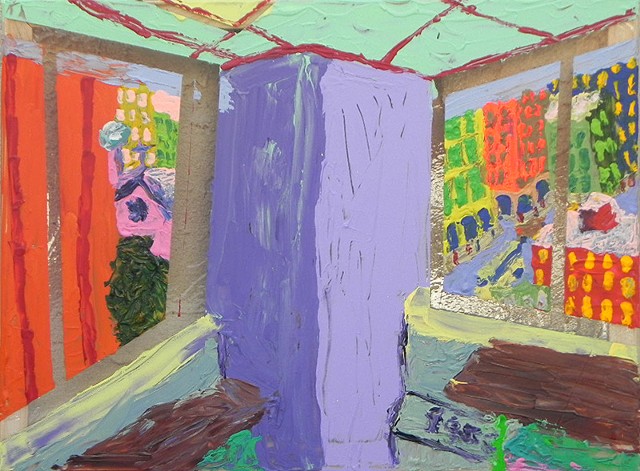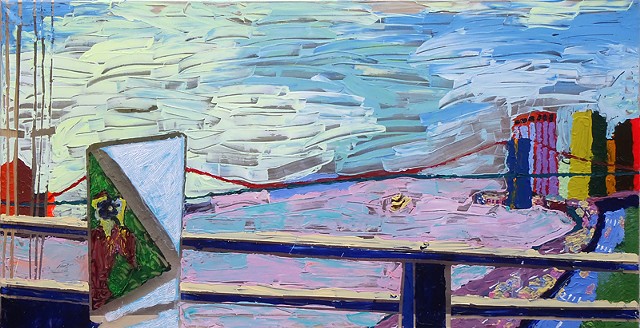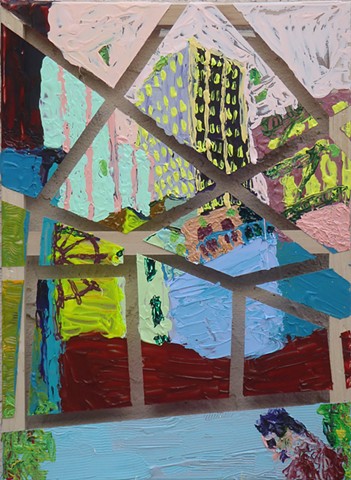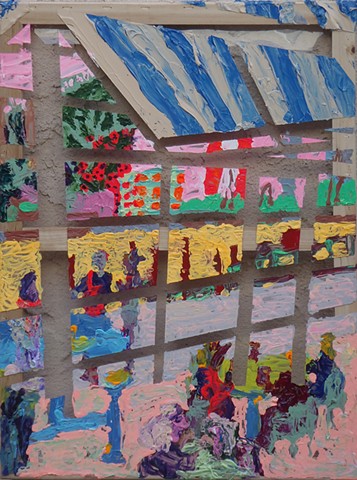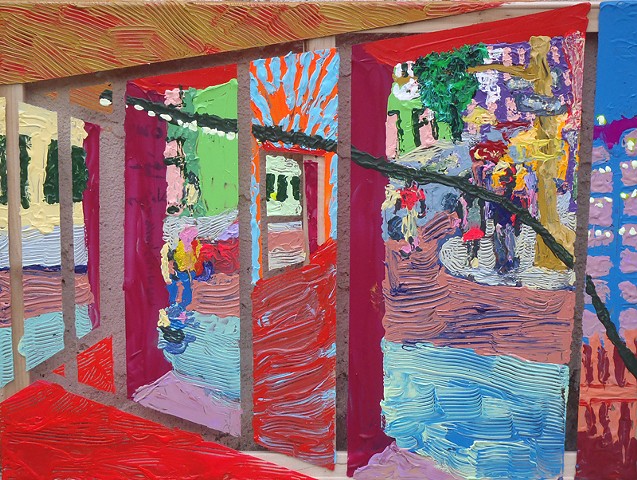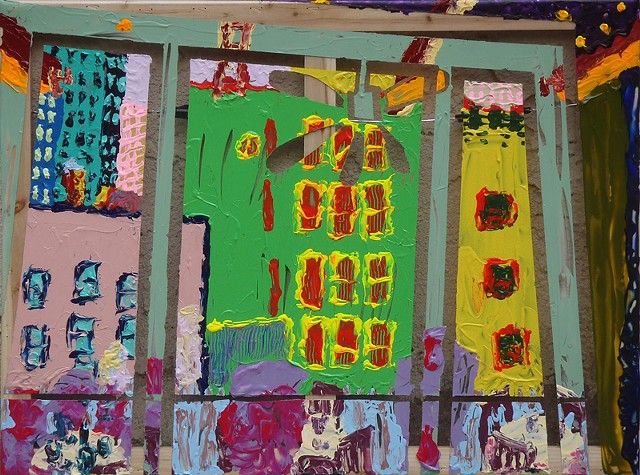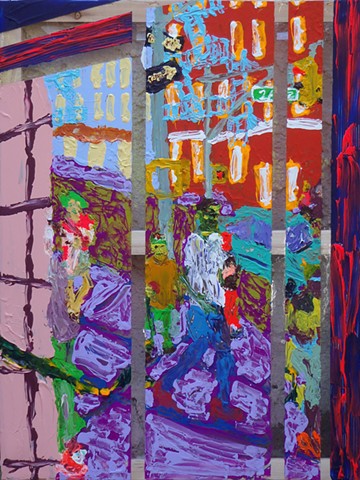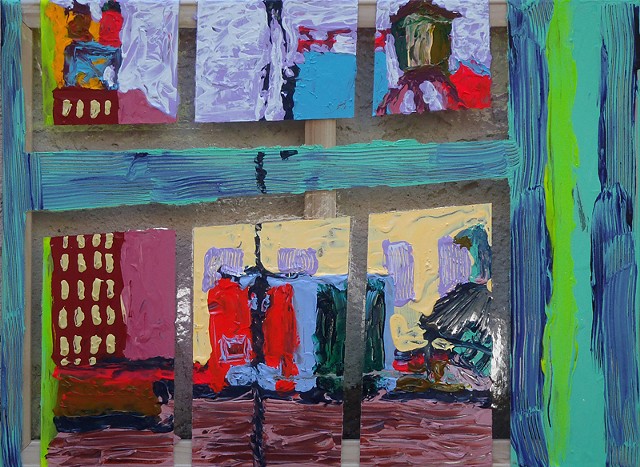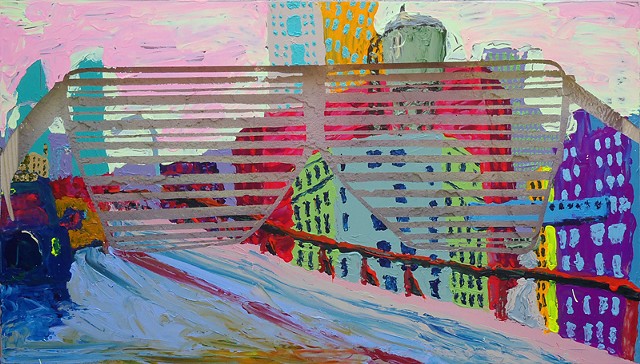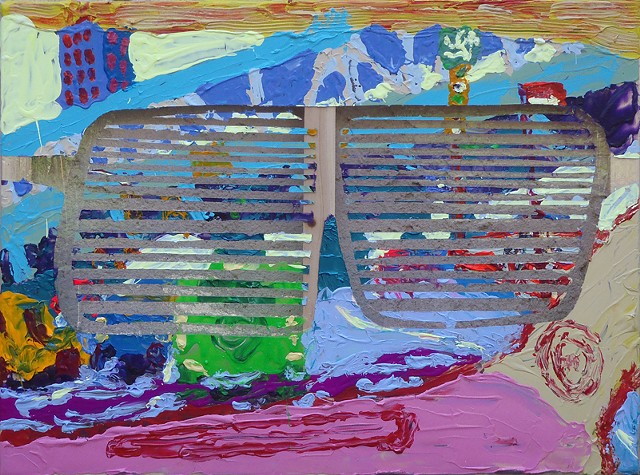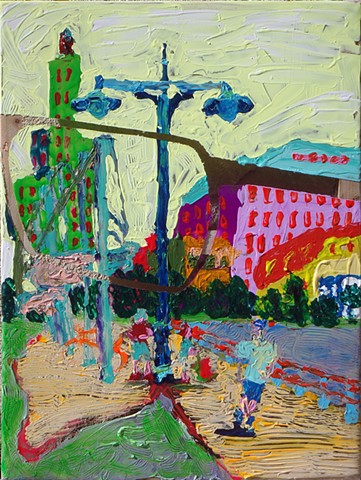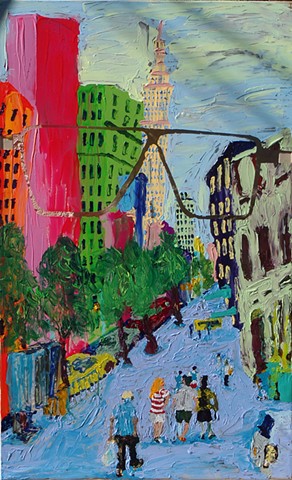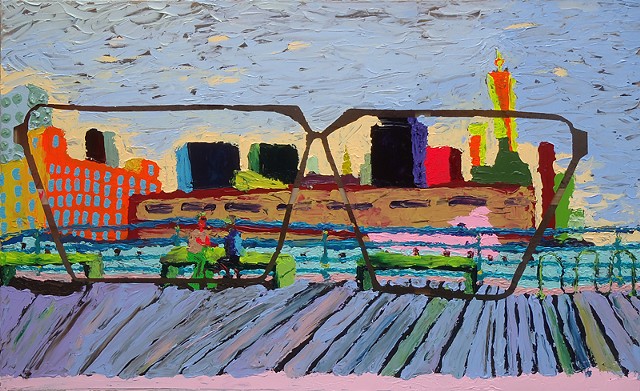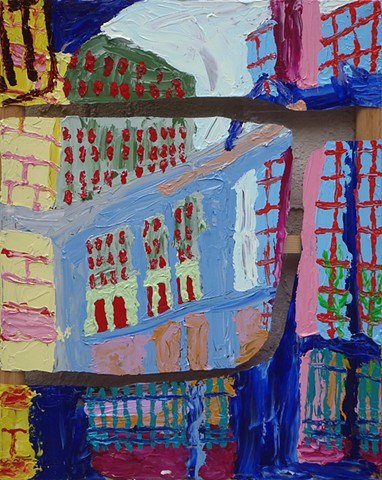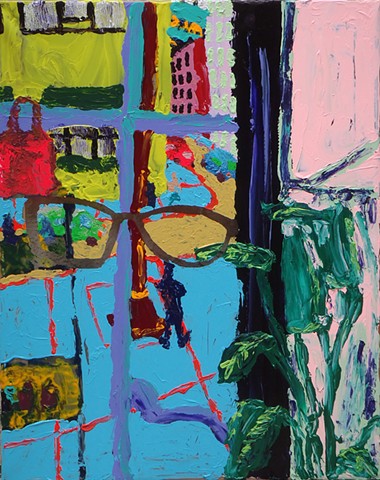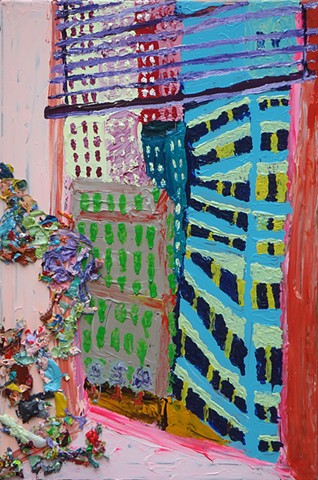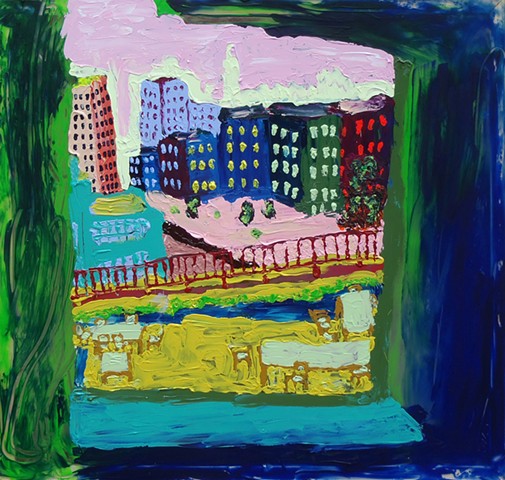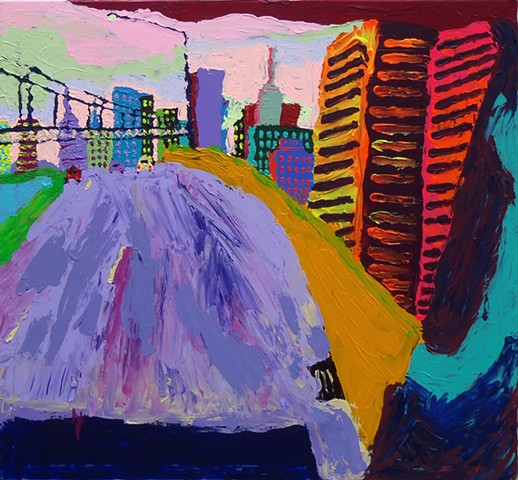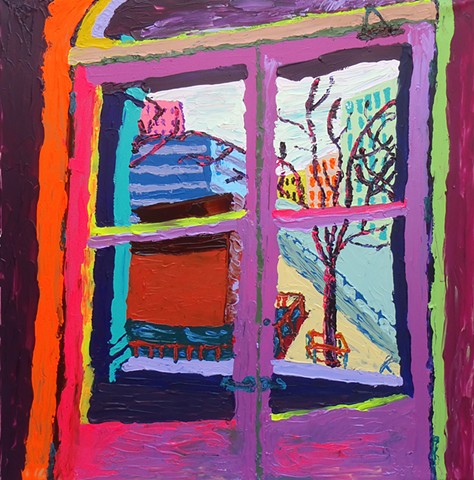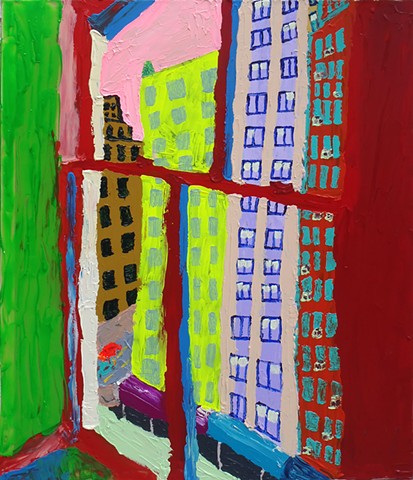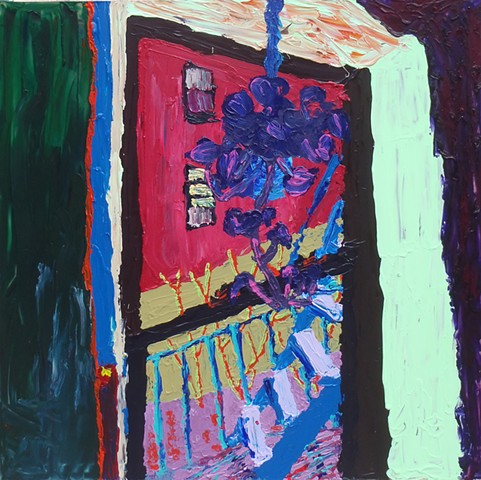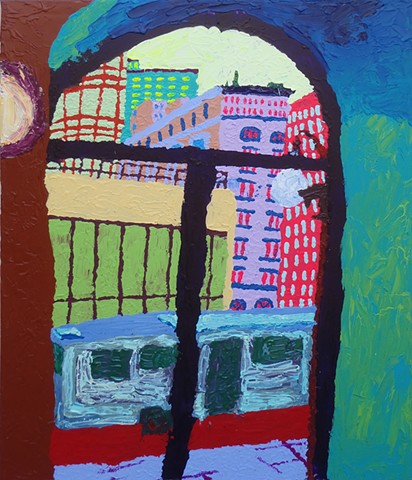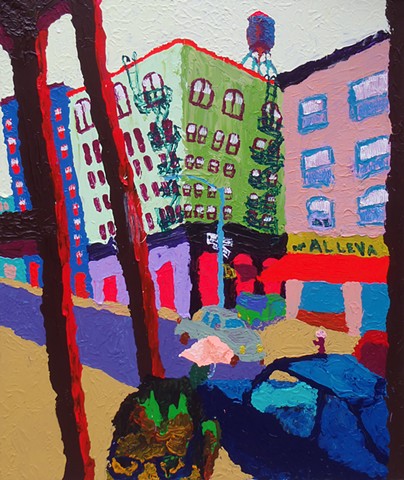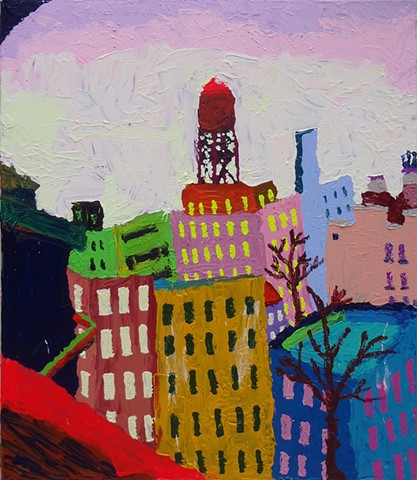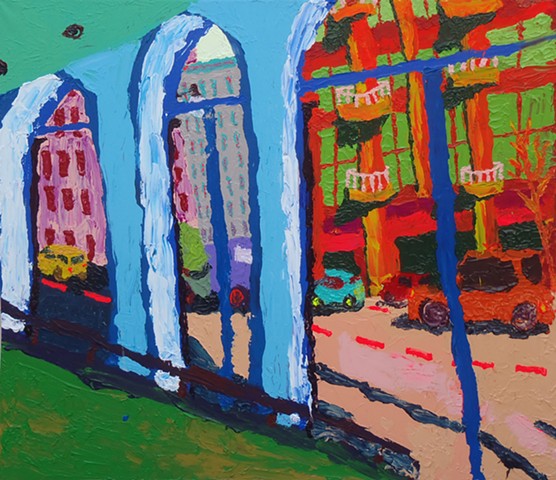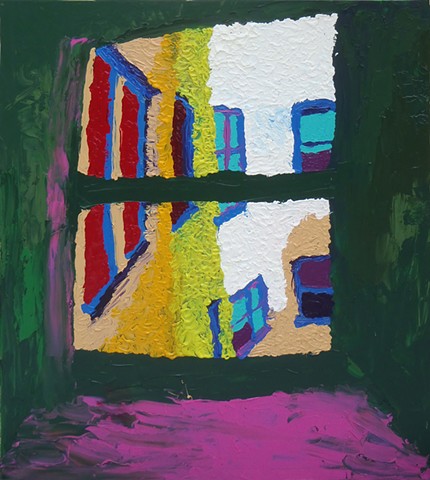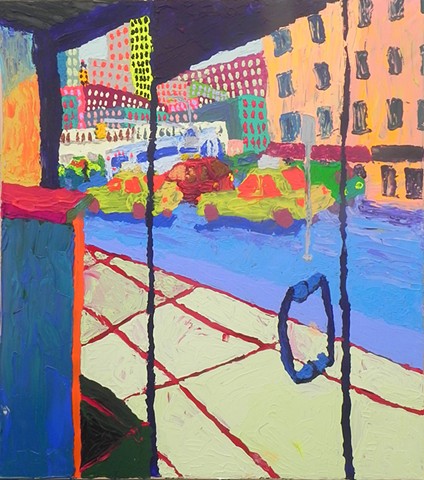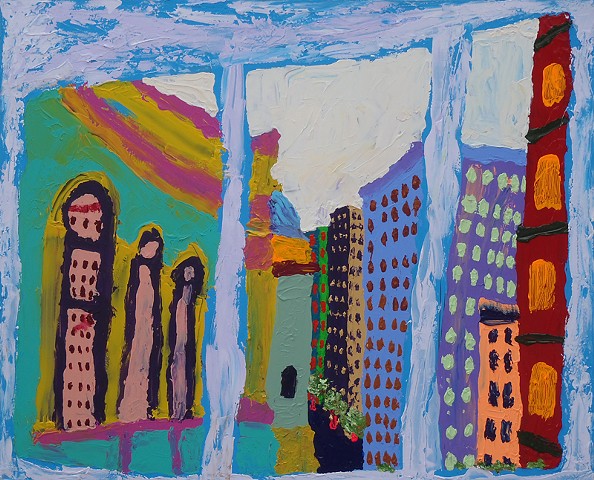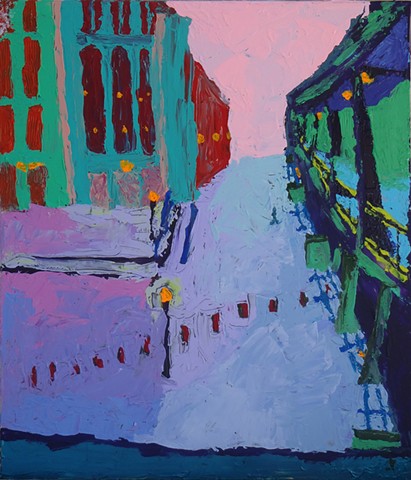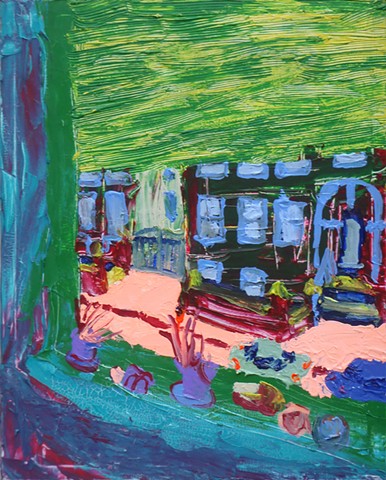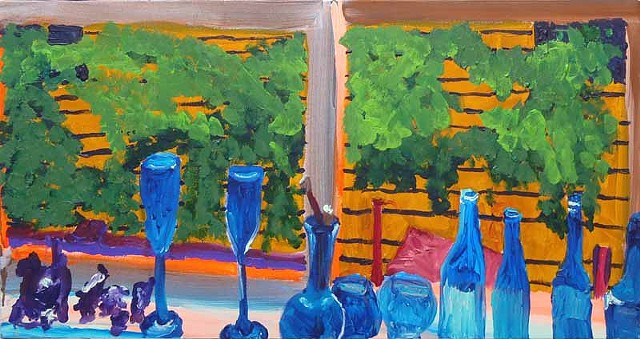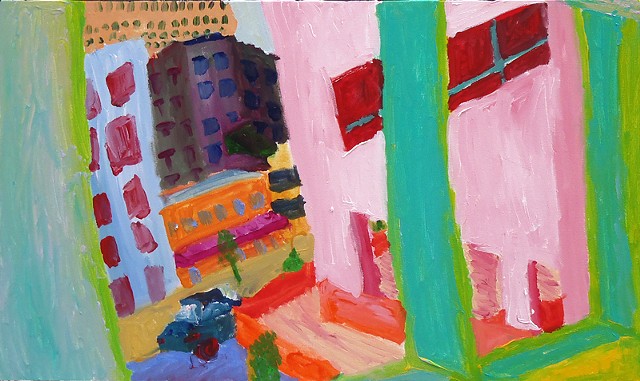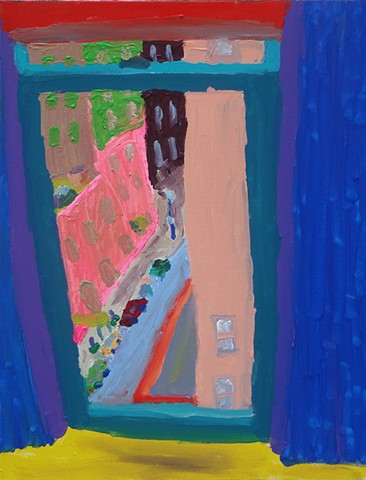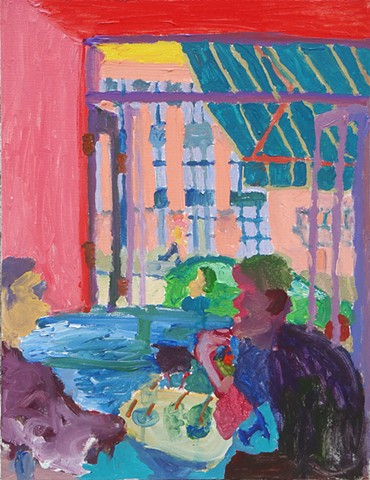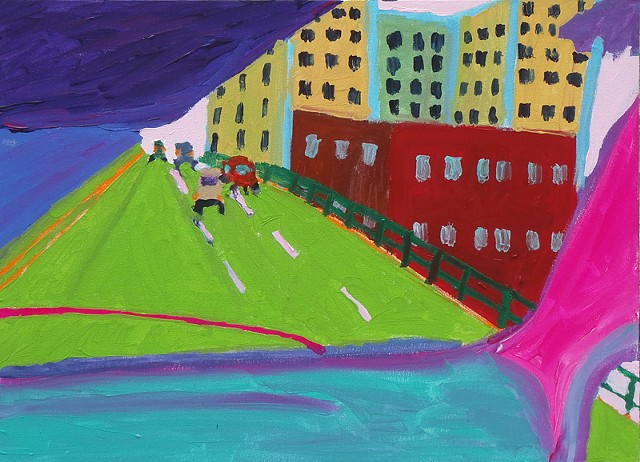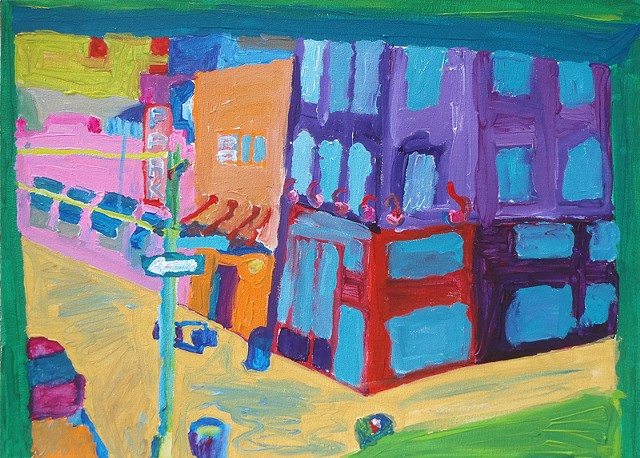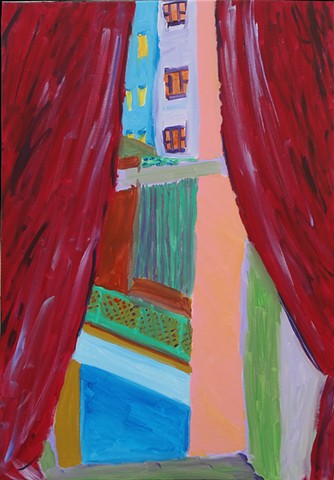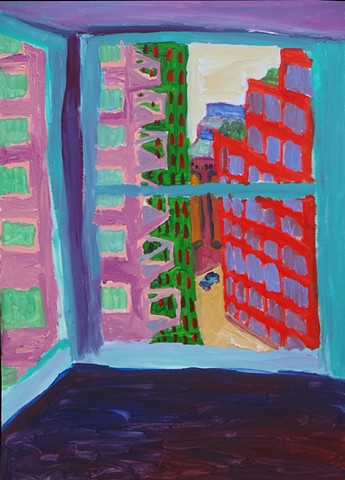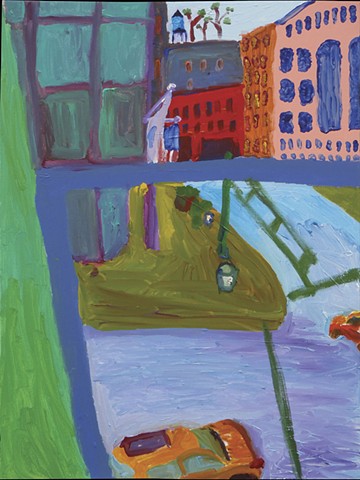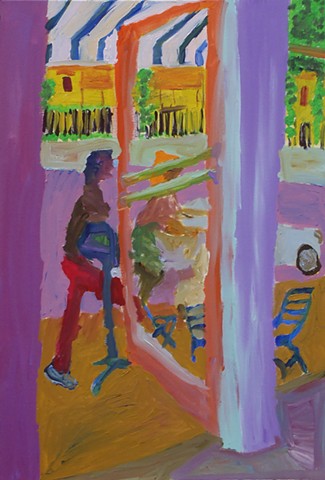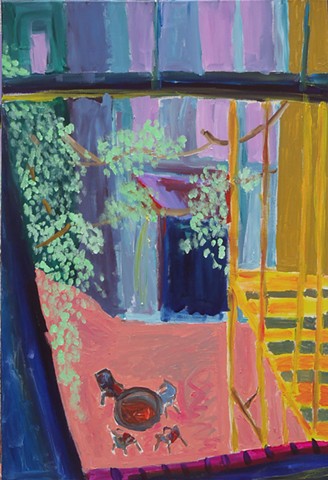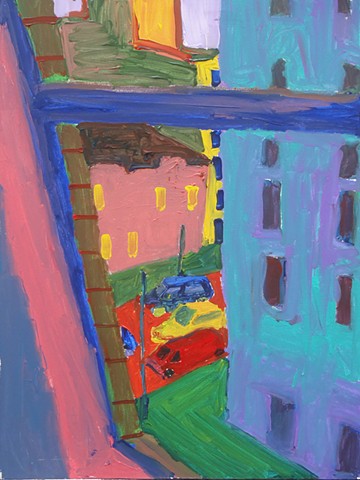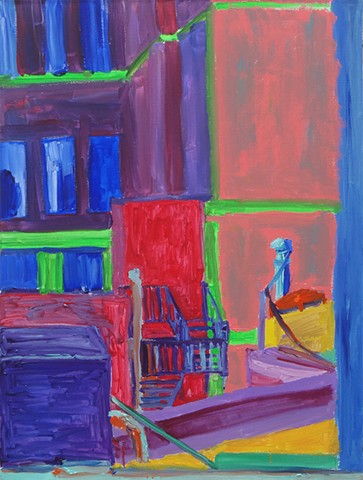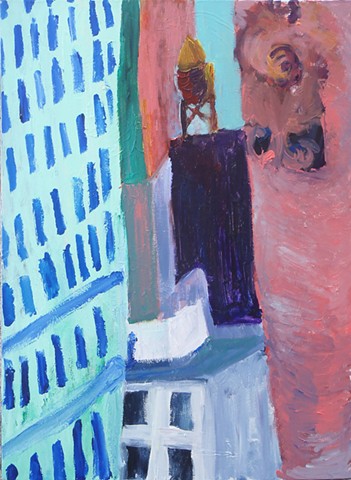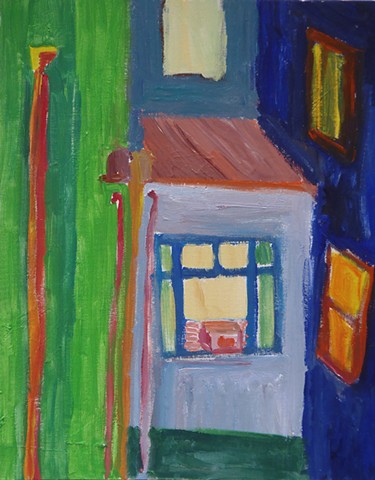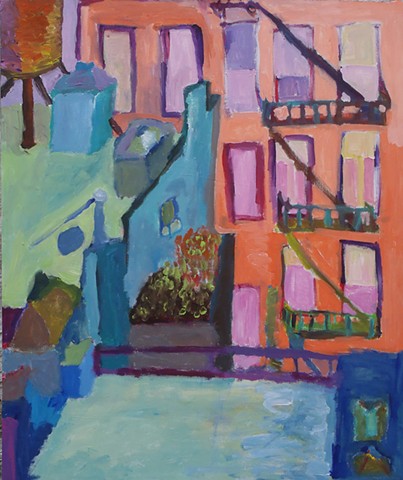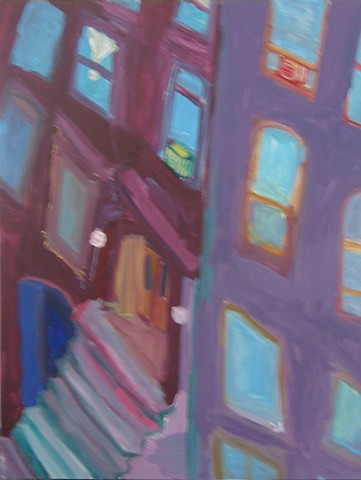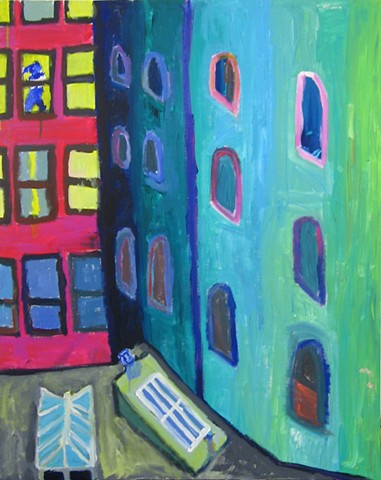Window Landscape Paintings
Nils Hasche-Vásquez’s current work, entitled New York City Windowscapes, are a group of paintings depicting a variety of window landscape scenes. The Windowscapes depict personal views witnessed, synthesized, and photographed by the artist of archetypical views of NYC and beyond from and through windows. These images purposely comprise closely cropped dwellings crammed together that have unexpected little surprises, moments of glory, and details that especially someone who has lived in NYC might appreciate. Hasche-Vasquez’s Windowscapes focus on iconographical references of the city and day-to-day life scenes, the color palette is non-traditional to landscape and is intentionally vibrant and loud. He uses photographs to capture an overall sense of window composition from which his paintings' evolve.
As Hasche-Vasquez paints he is acutely aware of the dialogue between the painterly materials he uses i.e. acrylic paint, stretched canvas or stretched vinyl, paint brushes, palette knives and spatulas, the compositional reference point(s) and intuitive and energetic choices made about application of colors within the painting overall. Hasche-Vasquez’s plays with the concept of windows as metaphors through out his artwork; for example, when the paintings include the window frame in the overall composition as they directly and indirectly relate to the edge of the canvas and the picture frame. As well as, the use of clear vinyl stretched over traditional stretcher bars in the traditional shape of a painting canvas that is conceptually and physically role-playing as window because they have similar physical and conceptual attributes, such as transparency, shape, clarity, edge, illusionary view, perspective, color, texture, and vibrancy. The viewer is invited to see the somewhat representational view of NYC through the personal perspective of Hasche-Vasquez’s artistic lens.
Significant cultural influences that affect his artwork come from a combination of cultural lenses that he believes are in conjunction with Sapir-Whorf hypothesis. Sapir-Whorf hypothesis comes from cultural anthropology and suggests that different languages have different patterns of thought and therefore different ways of perceiving the world through culture that together with life experiences help shape the speaker’s worldview. Hasche-Vasquez believes that each language one learns is a gateway to another culture(s) and potential worldview(s) and each culture is like a lens of a different color whose combined influences can broaden one’s perspective but also come together like a somewhat complicated and overlapping Venn Diagram or kaleidoscope. Furthermore, Hasche-Vasquez believes his multi-cultural influences stem from a combination of his Chilean and German heritage that are and were heavily prevalent through out his upbringing and through the present coupled with the life and cultural experience of growing up in the Pacific Northwest and spending his formative adult years in New York City.
Some artists Nils feels have influenced his work are Chilean painter Cecilia Boisier, Henri Matisse, Robert Rauschenberg, Chaim Soutine, and Edward Hopper.
